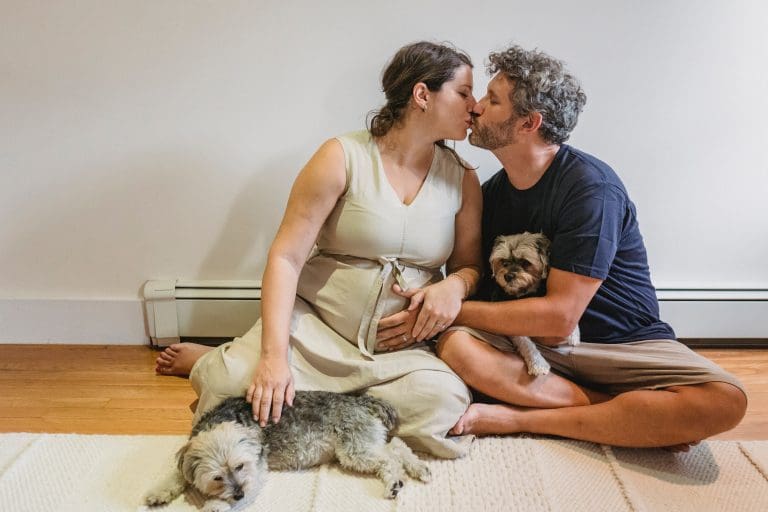When To Put Down A Dog With Degenerative Myelopathy?
Post Date:
December 10, 2024
(Date Last Modified: December 10, 2024)
Facing the struggle of a beloved dog with degenerative myelopathy is heart-wrenching. This progressive disease affects the spinal cord, leading to a gradual loss of mobility and a significant decline in quality of life. The emotional burden this places on both the pet and the owner is profound. Determining the right moment for euthanasia is a deeply personal choice that many pet owners grapple with.
Recognizing the Symptoms
Degenerative myelopathy often starts with noticeable weakness in the hind limbs, difficulty in walking, and an unsteady gait. As the condition advances, dogs can become completely paralyzed in their back legs. Other symptoms may include incontinence, trouble standing, and a decline in muscle tone. While some dogs may retain a good appetite and seem happy, the loss of mobility can lead to frustration and distress.
Assessing Quality of Life
As a responsible pet owner, evaluating your dog’s overall well-being is crucial. Look for changes in behavior, mood, and daily enjoyment. Does your dog still partake in activities they love? Are there signs of pain or discomfort? These reflections are critical in deciding whether it might be time for euthanasia.
Understanding the Nature of the Disease
Degenerative myelopathy is an incurable condition. While treatments such as physical therapy or mobility aids may help manage symptoms, they cannot stop the disease’s progression. Many owners wrestle with the decision of euthanasia as their dog’s condition deteriorates. This choice demands compassion and careful consideration of the best outcome for the animal.
Navigating Emotional Conflicts
It’s common for a dog’s spirit to remain vibrant even as their body fails. This can create an internal conflict for owners. Feelings of guilt may arise, especially if the dog still seems to find joy in your company. However, prioritizing quality of life is essential. If your dog endures more bad days than good, or if they suffer pain that cannot be alleviated, it may be time to consider euthanasia.
Seeking Veterinary Support
Veterinarians play a vital role during this emotionally charged time. They can assess your dog’s condition and provide insights into prognosis. Regular check-ups can help you understand how the disease progresses. Vets can also assist in evaluating your dog’s quality of life using tools like the HHHHHMM scale, which considers pain, appetite, hydration, hygiene, happiness, mobility, and more. While these conversations can be difficult, they are crucial for making informed decisions.
Identifying Declines in Joy
Moments of clarity may emerge when it becomes evident that your dog is struggling more than thriving. Changes in their behavior, such as no longer greeting you at the door or losing interest in toys, can signal that it may be time to consider euthanasia. Trusting your instincts, alongside your veterinarian’s observations, will help navigate this emotional landscape.
Acknowledging Your Own Emotions
The bond shared with a dog is unique and profound. The grieving process for a potential loss is natural and necessary. It’s normal to experience a range of emotions—sadness, anger, or even relief—at the thought of your dog no longer suffering. Allowing yourself to feel these emotions is important, and seeking support from friends, family, or pet loss support groups can be beneficial.
Creating a Peaceful Environment
When the time comes, providing a peaceful environment for your dog during their final moments is a loving gesture. Many pet owners opt for at-home euthanasia, allowing their dogs to feel safe and comfortable. Discussing these arrangements with your veterinarian can tailor the experience to meet both you and your dog’s needs.
Honoring Your Dog’s Memory
After making this difficult decision, finding ways to honor your dog’s life can bring comfort. Creating a memory box filled with their favorite toys, photos, and mementos can be soothing. Sharing your experience with others or participating in pet loss support groups can also aid in the healing process, allowing you to cherish the joy your dog brought into your life.
Deciding when to euthanize a dog with degenerative myelopathy is a deeply personal journey that varies for each owner. It requires balancing emotional reflection, careful observation of your dog’s condition, and consultations with veterinary professionals. Ultimately, prioritizing your pet’s quality of life ensures they are free from pain and suffering. Many pet owners navigate similar challenges, and sharing experiences can provide solace. Your love for your dog has guided you throughout their life and will continue to influence your decisions as you navigate this difficult path.






